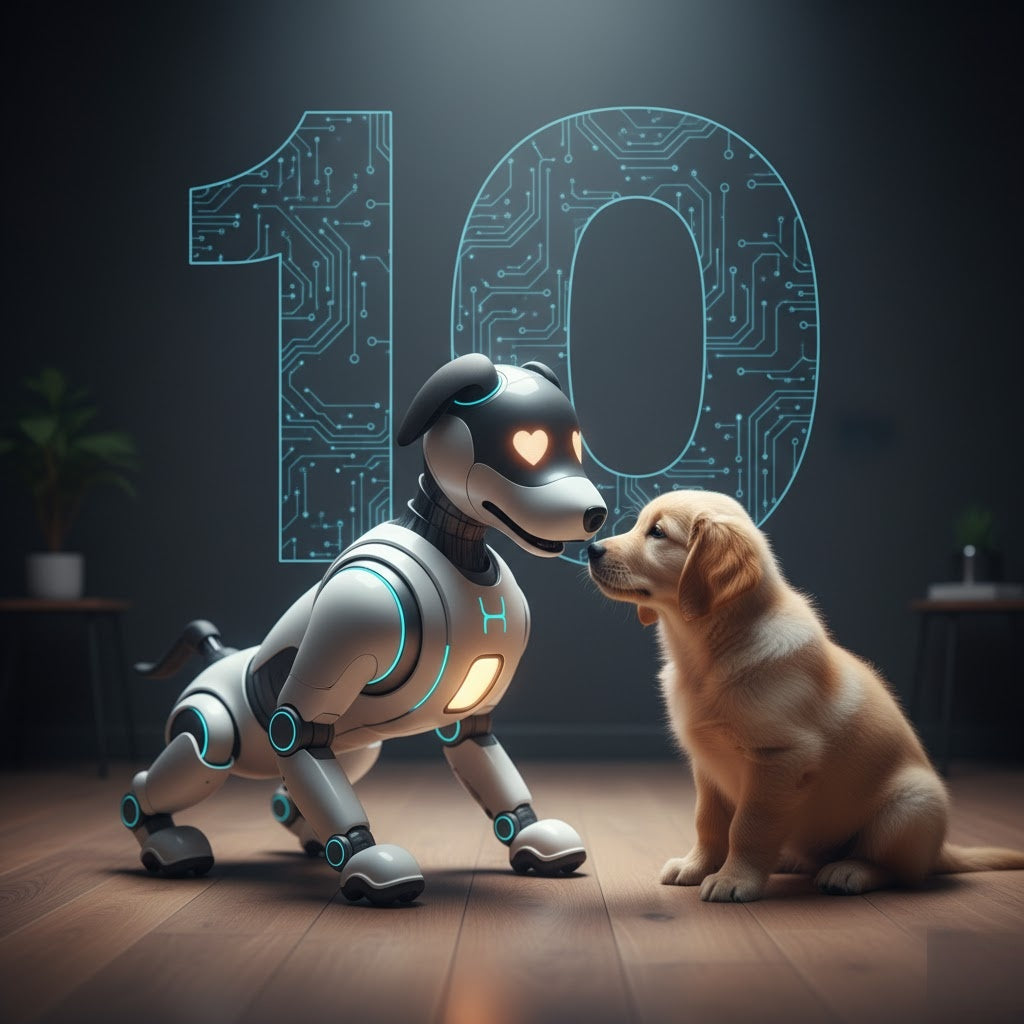-
Pet robot dogs offer a playful disguise for STEM education, blending fun interactivity with coding lessons to motivate kids effectively.
-
Among top options, models like Loona emphasize emotional companionship for beginners, while others like Petoi Bittle X cater to advanced users; block-based coding as an accessible entry point for most children.
-
Black Friday 2025 presents an ideal opportunity for affordable investments in these educational companions, with potential deals on bundles and accessories.
Making Coding Fun and Essential in Education
Educational Value Assessment
|
Criterion
|
Low Difficulty Example
|
Medium Difficulty Example
|
High Difficulty Example
|
|
Programming Level
|
Block-Based Coding (e.g., Loona)
|
Block to Python Switch (e.g., Codey Rocky)
|
C++/Python (e.g., Bittle X)
|
|
Fun/Motivation
|
High emotional feedback
|
Sensor-based games
|
Advanced custom projects
|
|
Hardware
|
Basic sensors/motion
|
Multiple sensors/AI
|
Bionic joints/gaits
|
|
Price Range
|
$100-200
|
$150-250
|
$200+
|
Top 5 Robot Dogs for Coding Education: In-Depth Reviews
|
Robot Model
|
Programming Difficulty
|
Fun/Motivation Score (1-10)
|
Hardware Features
|
Price (2025 Est.)
|
Ease of Use
|
|
Loona
|
Low (Block-Based)
|
9 (Emotional Feedback)
|
AI, Camera, Wheels
|
$499
|
High
|
|
Petoi Bittle X
|
High (C++/Python)
|
7 (Achievement-Based)
|
Servos, IMU, Voice
|
$299
|
Medium
|
|
Codey Rocky
|
Medium (Block to Python)
|
8 (Games/Sensors)
|
Color, Gyro, Sound
|
$140
|
High
|
|
Sphero Bolt+
|
Medium (Block/JS/Python)
|
8 (Motion Challenges)
|
LED Matrix, Accelerometers
|
$239
|
High
|
|
PYXEL
|
Medium-Low (Blockly/Python)
|
8 (Pixel Art)
|
Touch, Proximity, Speaker
|
$150
|
High
|
Loona Robot: The Emotional Companion for Beginner Programmers
Coding and Ease of Use
-
Programming Style: Loona uses block-based coding via its app, allowing children to program simple commands like movements, expressions, and interactions without needing advanced skills.
-
Of course, here is the optimized content.
-
Difficulty Level: The coding experience is very simple, using visual coding blocks to teach foundational concepts like sequences and loops.
-
Engagement: Children can program fun tricks—like having Loona show a happy emoji—by stacking coding blocks. This is ideal for preschoolers and young learners (ages four to eight).
Emotional AI and Learning
-
Companionship: Powered by ChatGPT-4o, it responds to voice and gestures with lifelike body language, fostering empathy alongside coding for kids.
-
Motivation: Programming Loona to "react" to pets builds emotional bonds, which motivates sustained learning and development.
-
Practical Coding: Hardware includes cameras for real-time interaction, wheels for smooth motion, and AI for home monitoring, letting kids code practical scenarios like following a path or recognizing family members.
User reviews
-
Limitation: For deeper hardware application, it lacks extensive sensors compared to others.
-
Overall: Loona excels as a programmable pet that disguises STEM learning, with value in developing both coding basics and social skills. If your child needs an engaging start, this top robot pet is unmatched.
Petoi Bittle X: Advanced Hardware Bionic Programming for Aspiring Engineers
For Advanced Coding and Hardware Projects
-
Difficulty: Jumps to advanced C++ and Python using the Arduino IDE. This high difficulty makes it best for upper primary and middle school students (ages 10 and up).
-
Skills Learned: Petoi's documentation highlights how children can code gait algorithms, joint controls, and even voice commands for over 35 lifelike actions like walking, sitting, or backflips.
-
Interface: The programming interface supports Scratch for intermediates but shines in text-based code, allowing customization of bionic structures for realistic dog-like movements.
Assembly, Motivation
-
Challenges: The steep learning curve might overwhelm beginners, and assembly requires adult help.
-
Motivation: As an interactive robot, Bittle X motivates through achievement—coding a custom trot feels rewarding.
User reviews
-
Educational Value: Reviews on Tom's Hardware and Science Focus emphasize its educational value in STEM learning, with users noting how programming sensors (e.g., IMU for balance) bridges code to physics.
Makeblock Codey Rocky: Multi-Modular Programming with Mature Educational System
Versatile Programming and System Maturity
-
Difficulty/Age: This medium difficulty level suits elementary students (ages 6–12).
-
Coding Transition: Kids start with visual block coding for basic actions, then smoothly transition to text code for AI functions.
-
Structure: The robot is built from Codey, a smart hub with an LED screen, and Rocky, a moving chassis, integrating multiple sensors for color, light, and motion.
-
Hardware Application: Kids can program interactions like voice recognition or obstacle avoidance, making hardware application highly practical.
Educational Value
-
Motivation: Fun stems from emotional expressions on the screen and games that teach logic. As a robot pet, it motivates through real-world coding for kids wins, like creating AI chats.
-
Overall: It's a top pick for comprehensive STEM education without overwhelming complexity.
User reviews
Sphero Bolt+: Mobile Sensor Programming in a Spherical Design
Versatile Programming and Design
-
Programming Levels: It uses the Sphero Edu App for draw, block-based, and JavaScript/Python programming—categorized as medium difficulty for intro to advanced users (ages 8+).
-
Key Features: Children can create creative displays by programing the 8x8 LED matrix, rolls, and colors.
-
Hardware: includes motion control devices such as gyroscopes, light sensors, and accelerometers. And waterproof durability add to the fun and utility.
Educational Value
-
Focus: It excels at teaching the connection between code and real-world dynamics.
-
Limitation: It lacks pet-like emotional feedback, unlike other models.
-
Overall: As a programmable pet alternative, it's excellent for coding for kids interested in dynamics and sensor-based control.
User reviews
PYXEL: Screen-Based Pet Programming with AI Visuals
Versatile Programming and Design
-
Beginners (ages 8+) to begin by creating commands by dragging and dropping colorful blocks. This low entry barrier teaches basic sequencing and logic.
-
Python: The robot also supports Python, a widely used text-based language. This lets older or more advanced kids transition to real-world coding, giving them a valuable skill set.
-
Creative Focus: Its programming is geared toward visual output, allowing kids to manipulate the robot's pixel-art screen display and control sounds and simple AI recognition features.
Educational Value
-
Difficulty/Age: Medium-low difficulty suits kids interested in visuals and screen-based design.
-
Sensors: Hardware includes sensors for touch, sound, and proximity, enabling reactive behaviors like "wagging tails" (via the screen display).
-
Educational Platform: Educational Insights' platform offers step-by-step guides, making hardware application fun—code animations or object detection.
User reviews
-
Engagement: Reviews on Trend Hunter praise its engagement, though it's less mobile than others.
-
Overall: As an educational companion, PYXEL teaches applying code to AI, making it ideal for creative STEM learning at an affordable price point.
The Ultimate STEM Starter Robot for Beginners
Our Top Pick: Makeblock Codey Rocky
-
Learning Curve: This easy step-up helps beginners learn without getting stuck, backed by plenty of tutorials and a helpful community.
-
Practical Application: Its rich sensors—color, sound, light, gyroscope—let kids quickly see code in action, like programming the robot to follow lines or react to voices, building real-world understanding.
-
Accessibility: Priced affordably at $140, it's accessible for parents, with easy setup via Bluetooth apps on iOS/Android.
Second Choice: Loona Robot
-
Motivation: Its emotional feedback through facial expressions and body language combats "learning boredom," making it ideal if motivation is the barrier.
-
Features: Loona combines ease with companionship, using simple blocks to code interactions that feel personal.
Why Others Were Excluded
-
Bittle X: Too hardware-heavy and advanced (C++/Python focus) for true beginners.
-
Sphero Bolt+: Has a great interface but misses pet-like emotional bonds, reducing fun for young kids.
-
PYXEL: Solid for Python intros but lacks Codey Rocky's modularity and sensors.







